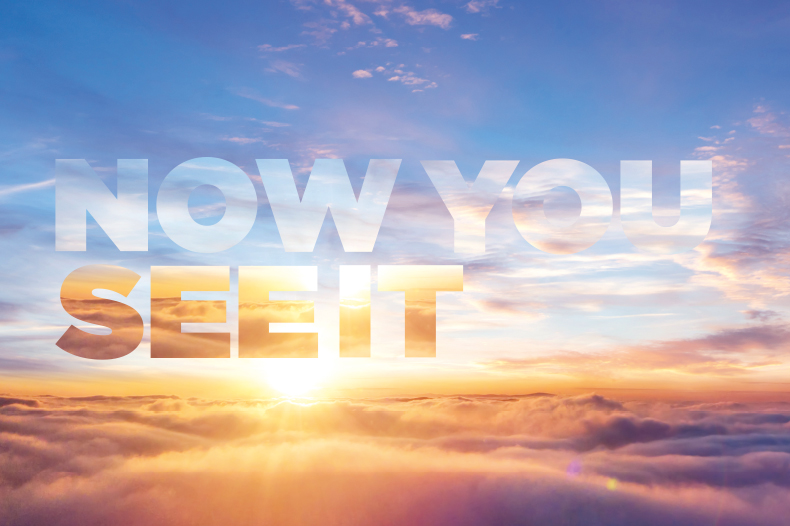Now you see it
Invisible disabilities and conditions affect people in every sphere of life – including the IP sector. We reveal what the industry can do to help.

At the dawn of the COVID-19 pandemic, society at large received a crash course in how the illness could affect different parts of the population.
We learned which groups were most at risk from the virus and who would require the most stringent protection, for instance on the basis of age, ethnicity or dealing with a pre-existing, long-term ailment.
But recent evidence shows that we have failed to appreciate how measures to contain the virus have affected one particular group: people with invisible disabilities.
Published in June by the Department of Health and Social Care, this year’s UK Disability Survey report revealed that facemask-exempt people with invisible disabilities had been directly harassed – and even physically assaulted – in public spaces over the previous year.
Even people with sunflower lanyards, which are specifically designed to announce that holders are living with invisible disabilities, reported having issues.
As well as experiencing harassment and assault, some respondents had been denied entry to businesses and public transport as a result of not wearing a mask.
Meanwhile, one disabled person drew attention to the difficulties faced by those with hearing loss and who are dependent on lip-reading: “Face masks make it nearly impossible to speak to anyone unless the person is wearing a clear mask/face shield.”
By providing new data for those tracking issues for disabled people, the pandemic has shed overdue light on one of our most underheard and underdiscussed social groups.
As the report notes, “it is crucial to raise awareness of invisible disability… and promote an understanding of the diversity of disability.”
Awareness gaps
So, what exactly constitutes an invisible disability? Essentially, it’s any physical or mental ailment, impairment or disorder that requires careful, day-to-day management but which, to most observers, is not outwardly evident. Some of the main categories include:
- Hereditary ailments – eg, sickle cell disease, cystic fibrosis;
- Neurological impairments – eg, hearing loss, dystonia;
- Neurodiverse states – eg, autism;
- Mental illnesses – eg, anxiety or depression, eating disorders, bipolar disorder, obsessive-compulsive disorder (OCD); and
- Progressive-degenerative diseases – eg, Parkinson’s disease, some symptoms of which are invisible and, for a time, may be the only effects that certain sufferers experience.
Other conditions that could fall on the spectrum are: arthritis, autonomic dysfunction, chronic fatigue syndrome, Crohn’s disease, epilepsy and multiple sclerosis.
And if we widen the net, people who are living with cancer or heart disease will often have symptoms that are invisible to the outside world.
Comprehensive figures on invisible disabilities are hard to pin down. In the 2019 to 2020 edition of the UK Family Resources Survey, 5.1 million people reported that they were living with a stamina, breathing or fatigue condition, while 4.1 million said that they were managing challenges around mental health.
However, each category would contain a blend of respondents whose symptoms are visible and others whose conditions show no outward signs. As Paul Fuller, executive director of partnerships at disability charity Scope, explains, “One in five of us in the UK are disabled, but this is not always obvious.”
In recognition of how common it is to have an invisible disability, Scope has recently launched a campaign on the subject in partnership with ITV.
Part of the problem is that the field of invisible disability is littered with information and awareness gaps that risk fostering, in Fuller’s words, “negative attitudes, social isolation and a lack of understanding”.
But as organisations become more aware of issues around workplace diversity, closing those gaps must be a priority for every industry – including the legal sector.
Potential hazards
Birmingham-based Megan Rannard, an Associate at Marks & Clerk, lives with Ehlers-Danlos Syndrome (EDS), a rare hereditary condition that affects her body’s joints and connective tissues. Rannard says that she looks “normal and healthy around 80% of the time”, with the other 20% spent on crutches or wearing a sling.
However, those percentages are not indicative of day-to-day living, as Rannard regularly struggles with menial, physical tasks, including those related to work. Balancing her condition with her professional routine presents frequent obstacles.
“I can’t tell my colleagues that I’m going to be unwell for the next 72 hours,” she says, “because I won’t know until it happens.
"That can be quite challenging, particularly if work is really busy and I wake up to find that something has dislocated. Juggling the two is tricky: you don’t know how busy you’re going to be, and you don’t know when the next flare-up is going to strike.”
For Rannard, everyday aspects of navigating an office are fraught with potential hazards. “It can be surprising for some people how much I struggle with simple things,” she says.
“Big, floor-to-ceiling glass doors are difficult for me to open. Pulling a heavy chair out from under the meeting-room table can actually be quite painful. Even when I’m opening the fridge or putting the kettle on in the kitchen, I have to be careful not to dislocate any wrists, elbows or thumbs.
"So, the whole question of how to put in place a safer work setup isn’t just about immediate objects like a desk and keyboard. It extends well beyond those.”
EDS has also posed hurdles in the course of Rannard’s specialist subject-matter training. “Trade mark attorneys are required to do two courses, which we must attend in person,” she explains.
“The first course involves travelling down to either London or Bournemouth. In my four years as a trainee, what I’ve probably found hardest to deal with is the combination of the mental demands of learning, training and taking exams at the same time as having a full-time job, and the physical demands of travelling, doing loads of overnight stays and sitting in lectures.
“Often, the course modules will nudge into the weekend, so you will only have half the weekend left to rest and recuperate. This is all very specific to the IP world. Plus, every year I’ve had to go through a process of providing proof of disability to secure exam adjustments, as I can no longer write with a pen because of my fingers.”
But despite the manifold effects of EDS on her lifestyle, its invisible status most of the time has led Rannard to experience unhelpful preconceptions. “You never quite know how people are going to react,” she says. “When I was with some friends recently, I was introduced to someone I hadn’t met before.
"My friends and I were joking about something to do with my condition, and the new person just looked me up and down and said, ‘You’re not disabled.’ I had to say, ‘Um, sorry… I am!’ When you’ve had a few experiences like that, it can make the thought of being open and honest about it a bit nerve-racking.”
Rallying allies
Rannard is a committee member of IP Ability, a branch of diversity and inclusion awareness group IP Inclusive.
One of her fellow members is Kerry Russell, a specialist IP solicitor and head of the internal Diversity and Inclusivity network at law firm Shakespeare Martineau.
“Within our profession, there are definitely challenges around invisible disabilities,” says Russell. “For example, one rather big talking point in IP Ability recently was the decision by the European Patent Office (EPO) to conduct almost all of its proceedings virtually.
Given the impacts of COVID-19, the EPO considers this to be the most inclusive way forward. But if you have a hearing impairment and rely on lip-reading, your understanding of proceedings may be only as good as the quality of the stream, or the size of the speaker’s mouth on the screen.
And if you have an invisible condition that leaves you with regular migraines, looking at a screen for hours at a time during an EPO session may not be the most appealing prospect.”
On a wider, everyday level, Russell explains: “Someone who is dyslexic may experience challenges with interpreting patent or trade mark documents and may require special provisions to assist them.
"On the other hand, a neurodiverse individual may find that they are well suited to a task such as drafting patent specs, because of a facility for interpreting and structuring information.”
Within her own work, she notes: “I really like to be around other people, but I know from workshops I’ve done with my team that some of them are far more geared towards a quiet environment where they can focus on absorbing material without interruptions.
"So, while lockdown didn’t work for me, it was a good fit for some of my team mates.”
Against this tapestry of differences and contrasts, Russell stresses that empathetic allyship on the part of non-disabled colleagues and senior figures is vital. “This isn’t simply a case of doing some tick-box unconscious bias training,” she says.
“It’s about understanding people’s challenges, accepting them as facts of life and acknowledging that different people will approach their challenges in different ways. Some employees may prefer not to talk about them very much at all, while others will feel that they benefit from the pressure valve of regular, confidential chats.”
Effective allyship, Russell notes, is based around three pillars:
- DO YOUR RESEARCH. “Learn as much as you can about the lifestyles of different types of people – not just in the field of disability, but all forms of inclusivity. It’s likely that on your team you will have people with a disability, people who are gay and others who are from different cultural backgrounds.
Knowing how those factors influence their daily lives will help you be inclusive. There is plenty of online material to dive into that will open your eyes to how different people experience the workplace.” - HARNESS THE POWER OF NETWORKS. “If your organisation doesn’t have a disability-focused employee network, create one. Once you have one, make sure it welcomes non-disabled staff. When I entered the workforce, I went to lots of LGBTQ+ events, which was great, but I quickly realised that everyone who turned up was LGBTQ+, so we were all preaching to the choir.
Being an ally who has no reason to be part of a particular network but who happily shows up anyway sends a really powerful message.” - MAINTAIN CONSTANT EMPATHY. “In your day-to-day work with your team, take an open-minded approach and convey to your colleagues, ‘I’m here to talk if you want to, but you don’t have to explain things to me if you don’t want to.’
When I think about my team, we definitely have that type of atmosphere. We get it. We trust each other. We’re here to support each other. That’s really important.”
Fuller agrees that there are many things that can be done at both an individual and organisational level to support people with invisible impairments or conditions.
Start, he says, by not making assumptions about other people’s disabilities.

“Deepening your own understanding of disability is a crucial part of being a good ally. Read and learn about the advantages and benefits you experience as a non-disabled person and how to champion disabled people’s rights.
“Organisations must do everything they can to champion accessibility and inclusion. Businesses should ask their employees about any needs they might have and create an environment where people feel comfortable expressing themselves and sharing information.
"Truly inclusive workplaces are those that create opportunities for everyone to thrive.”
The Law Society has created two publications on Easy Wins and Action Points for Disability Inclusion, one for smaller and one for larger organisations. Alternatively, click here for more information from Scope.
Our webinar to mark Disability History Month will provide further insight and perspectives from a range of speakers.
Read the full issue

